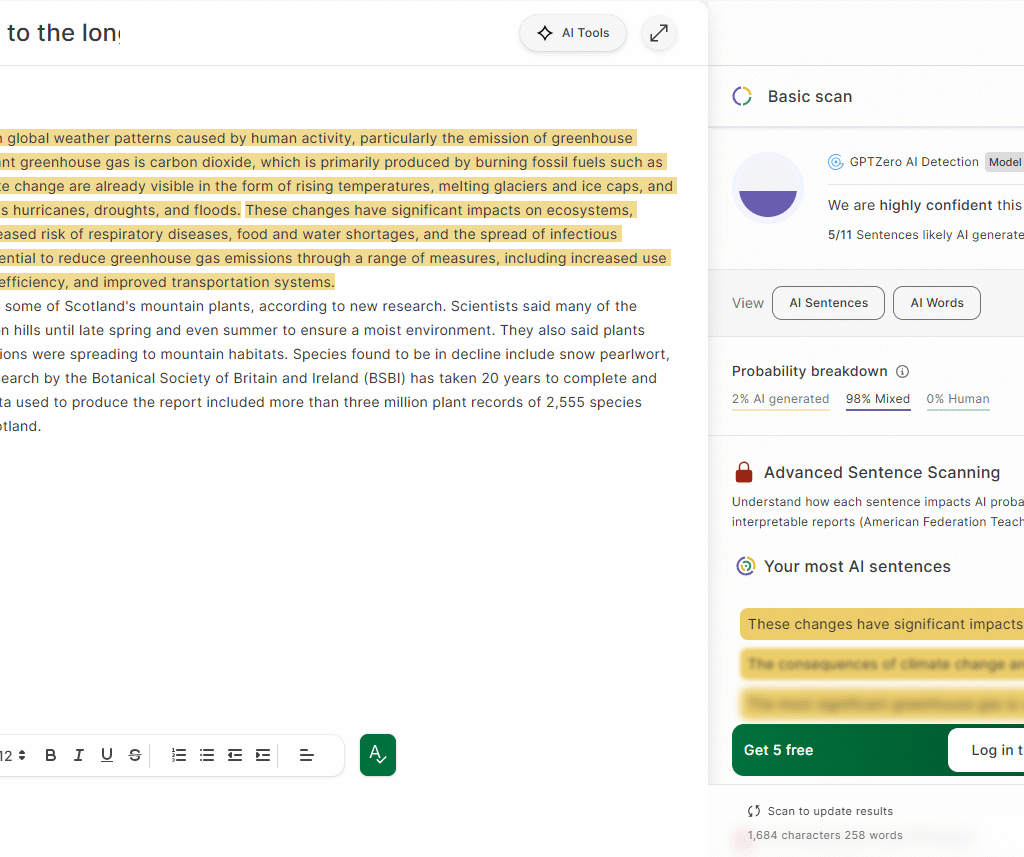In 2025, AI tools like ChatGPT are not just assisting writers—they’re transforming how content is created across the internet. As artificial intelligence becomes nearly indistinguishable from human writing, the question “Did ChatGPT write this?” matters more than ever. It raises concerns about authenticity, transparency, and the credibility of online information, especially in journalism, education and business communication where trust in the author’s voice is essential.
What Is ChatGPT and How Does It Work?
ChatGPT is an artificial intelligence chatbot developed by OpenAI. It’s based on a language model called GPT (Generative Pre-trained Transformer), trained to understand and generate human-like text. You can ask it questions, give it commands, or request content, and it responds with coherent, often detailed results. ChatGPT is built on vast data from books, websites, and articles, and in its latest version (GPT-4), it can perform tasks with impressive accuracy and fluency.
Overview of ChatGPT’s Capabilities and Applications:
ChatGPT is an advanced AI language model developed by OpenAI, capable of understanding and generating human-like text. It can write articles, answer questions, draft emails, create code, and even simulate conversations. Its versatility makes it useful across industries—from content creation and customer service to education and programming. In 2025, ChatGPT is widely adopted as a powerful tool for boosting productivity, automating tasks, and enhancing digital interactions with natural, coherent language.
Human vs. AI Writing: Can You Tell the Difference?
One of the most debated topics today is whether readers can still differentiate between AI-generated and human-written content. While human writing often carries unique tone, emotion, and context, AI content tends to be more structured, formal, and neutral. However, with improvements in AI models, the line has become blurry. Many readers now struggle to identify who (or what) authored the content.
Common Signs of AI-Written Content
- Repetitive or overly formal phrasing
- Lack of personal anecdotes or original insights
- Overuse of transitional phrases like “moreover,” “therefore,” etc.
- Consistent grammar with little variation in sentence structure
- Slight factual inaccuracies due to outdated data
Tools to Detect AI-Generated Text (and Their Limits):
Several tools exist to detect AI-generated content, including:
- GPTZero: Designed specifically to catch AI writing
- OpenAI’s Classifier: Offers basic detection

GPTZero
These tools are helpful but not foolproof. As AI models evolve, so must detection methods.
Why Writers Are Using ChatGPT More Than Ever:
AI tools like ChatGPT offer unmatched speed, consistency, and idea generation. Writers, bloggers, marketers, and even teachers use ChatGPT to outline drafts, brainstorm topics, and edit content. It doesn’t replace creativity but enhances efficiency, allowing professionals to focus on polishing ideas rather than starting from scratch.
Ethical Concerns: Transparency, Plagiarism, and Trust:
The rise of AI content raises ethical questions:
- Should writers disclose when content is AI-assisted?
- Is using ChatGPT plagiarism if it pulls ideas from existing sources?
- How do we maintain trust if readers assume all content is machine-written?
Transparency is key. Many platforms now encourage or require disclosure when AI plays a major role in content creation.
Impact on Journalism and Content Creation:
In journalism, where credibility is everything, AI-generated content must be carefully reviewed. Some outlets use AI for financial reports or sports summaries but assign sensitive topics to human writers. In content marketing, however, AI is widely accepted to scale blog production, product descriptions, and social media posts.
How to Authentically Blend AI Assistance with Human Voice:
The best approach is collaboration: let AI handle structure or basic research while humans add emotion, nuance, and unique insight. This combination ensures content is both efficient and authentic, meeting quality standards while retaining personal voice.
Conclusion: Does It Matter Who Wrote It?:
As AI writing tools become more powerful, the debate isn’t just about who wrote the content but whether it delivers value, accuracy, and integrity. Readers care about authenticity, and writers must adapt by using AI ethically, blending automation with originality. In the end, whether it was written by a person or a program, great content speaks for itself.
Also Read
https://newsnanosecond.com/what-is-digital-marketing/
References:
MIT Tech Review: https://www.technologyreview.com/2020/12/04/1013294/ai-language-models-are-rife-with-biases/
OpenAI Blog: https://openai.com/blog/chatgpt
GPTZero: https://gptzero.me/
New York Times: https://www.nytimes.com/2022/12/10/technology/ai-language-chatbots.html
HBR: https://hbr.org/2023/03/how-ai-is-changing-the-way-companies-write-job-descriptions

Add a Comment